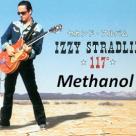Storage, the great balancing mechanism of the natural gas market in North America is heading toward another evolution in its usage, flow patterns and economics. Not too many years ago, natural gas storage was the hottest midstream investment opportunity going, expected to synchronize inbound flotillas of LNG imports with seasonal domestic demand. Winter vs. summer price differentials were wide, prices were volatile and storage economics looked great. When shale gas happened, those differentials evaporated along with storage economics. Today another phase looms for natural gas storage as Marcellus and now Utica production ramp up on top of (or more accurately, underneath) the largest storage region in the world – the Northeast U.S. This is a big topic with big implications. So rather than jumping into the middle of the upcoming gas storage transformation, we will walk through a multi-part North America natural gas storage blog series - its history and status, its challenges, who’s involved, and finally what could be in store going forward. Today we’ll start with some natural gas storage basics.
Daily Energy Blog
Earlier this week (see Spring, Spring, Spring is in the Air) we looked at the US natural gas supply demand picture. Our analysis focused on the 25 percent run up in NYMEX natural gas futures prices to $4/MMBtu this year (they have since slipped back to close yesterday at $3.90/MMBtu). Prices rose because high winter demand helped demolish a huge gas storage surplus that hung over the market and depressed prices since last spring. The market should not forget however that for a time last year – with prices below $2/MMBtu and Lower 48 dry gas production through the roof - there was talk of hitting the “storage wall”. A sharp increase in power burn soaked up 6 Bcf/d of natural gas last summer and helped the market out of that scrape.
Last Thursday (March 28, 2013) the CME Henry Hub natural gas futures contract closed out the first quarter of 2013 at $4.024/MMBtu (prices slipped 0.9 cents to $4.015/MMBtu Monday). A year ago the futures price was $2.126/MMBtu – about half what it is today. During that same period, US dry gas production has risen by 0.5 Bcf/d to 64.1 Bcf/d and natural gas power burn has fallen by 2.2 Bcf/d (source: Bentek). With production still increasing and demand from power generation falling it seems unlikely that the market can sustain $4/MMBtu prices. Today we look at the supply demand picture at the end of the winter season.
Over the past two years, natural gas production from the Appalachian region has soared with growth in the Marcellus pushing total production beyond 10.5 Bcf/d. Just next door the Utica Shale is coming into focus with attractive economics due to the natural gas liquids, crude oil and condensate production. The looming question is natural gas takeaway capacity. With Marcellus production continuing to grow and Utica supplies coming on, production in the Northeast will soon exceed regional consumption and will need to be moved out of the region to other markets in the U.S. and Canada. To accomplish this, new pipelines have been proposed and reversals of existing infrastructure that was originally built to transport gas into the region are being implemented. Today we review another of the proposed projects.
Last week (March 18, 2013) the CME NYMEX Henry Hub futures contract open interest reached a record 1.32 MM contracts. The previous high was in April 2012. Open interest represents the number of positions held by futures market participants that are not yet offset by another transaction, by delivery or by exercise. Today we look at what lies behind the run up in natural gas futures traffic.
Henry Hub natural gas futures prices are up 90 percent since their 10 year low of $1.907/MMBtu on April 19, 2012 – closing at $3.872/MMBtu on Friday. Over the same period the price of Gulf Coast ultra-low sulfur diesel fell by 4 percent to $3.027/gal. Nevertheless if you use liquefied natural gas to power a rail locomotive the equivalent fuel cost is about $0.48/gal (before adding in liquefaction and other costs). That is the reason why BNSF is taking a second look at LNG powered locomotive technology and Shell is building LNG plants in Louisiana and Sarnia. In today’s blog we review the appeal of gas-powered locomotives.
It’s the first week of March 2013 – the final month of the natural gas winter season. This winter has been colder than last so far reducing the record storage surplus that we started the season with. Natural gas prices have traded in a range between $3.25 and $3.50/MMBtu so far this year. Production continues at or near to record levels however and higher prices will likely reduce gas fired power generation. That means summer demand could be lower than last year and the storage surplus would rebound again. Today we review the current natural gas supply and demand situation.
Natural gas imports into the Northeast US from Canada have fallen to around 1 Bcf/d from 3 Bcf/d in 2008. Infrastructure projects are underway or planned to replace Canadian supplies with gas from rapidly expanding Marcellus and Utica production. US gas is already flowing into Ontario at Niagara and will flow into Dawn if one or more Utica gas export projects are built. . Meantime the proposed Constitution pipeline from the Eastern Marcellus to New York would replace Canadian supplies into New York on the Iroquois pipeline. Today we review the next pieces of the reversal puzzle.
Canada imports as much as 2 Bcf/d of natural gas from the US in the region around the Dawn trading hub. The Dawn system has traditionally been fed by Western Canadian supplies and long haul pipelines from the US Gulf, Midwest and the Rockies. Marcellus gas can already reach Dawn via the border crossing at Niagara to the East. The Nexus Gas Transmission project will bring 1 Bcf/d directly into Dawn from the Utica. Today we detail the changing flows.
Could the construction of new production capacity for one chemical product result in a 1.4 Bcf/d increase in natural gas demand? Yes it could - if all the methanol plants that have been announced and are on the drawing board get built. Of course, it is pretty unlikely that they will all get built, but even if only the best projects are completed, they will still consume a lot of gas. Today we’ll lay out the new plant construction numbers.
Last Thursday (January 31, 2013) a high frequency trading event about 400 milliseconds before the scheduled EIA Storage data release set off a frenzy of selling in the NYMEX Natural Gas futures market. Some analysts believe that the storage report could have been leaked. Others blamed computer timing issues. These events resurrected ghosts of EIA storage numbers past and inspired our examination of these developments in the context of the evolution of high frequency trading in energy markets.
Canadian natural gas exports to the Northeast US fell from about 3Bcf/d in 2008 to around 1 Bcf/d in 2011 and have been at that level ever since. Last November significant US exports began to flow northward across the border into Canada at Niagara. Natural gas demand in Ontario is forecast to reach 3.25 Bcf/d by 2020. Today we describe how projects on the Canadian side will allow Marcellus gas to replace traditional Western Canadian supplies.
Growth in natural gas demand forecasts these days rely heavily on projections of increased power burn. Lack of coordination between the gas and electric industries threatens to limit that expansion. The greatest challenge is the security of gas supply to the generators and how that impacts reliability. Regional differences in the electric power market appear to make national regulations to secure gas supplies unworkable. Today we review FERC efforts to understand and perhaps attempt to standardize those regional differences.
Is the winter of 2012/13 all over - bar the shouting? With the end of the heating season just nine weeks away (March 31, 2013) there may not be enough time left for winter temperatures to have a material impact on record natural gas storage levels. Today we analyze where the winter could go from here.
Canadian National Energy Board (NEB) data released earlier this month shows that the flow of natural gas imports across the US border at Niagara reversed to become exports for the first time in 2012. In the “old world” before Marcellus in 2008 - Canadian gas flowed into the US at an average 0.9 Bcf/d at Niagara. Last year those imports ground to a halt from May to October 2012 before reversing to 0.3 Bcf/d of exports to Canada in November. The reversal confirms that expanding Marcellus supplies are not just pushing Canadian imports back over the border but also starting to penetrate the Canadian market. Today we look at the dynamics of the Northeast gas flow reversal.




